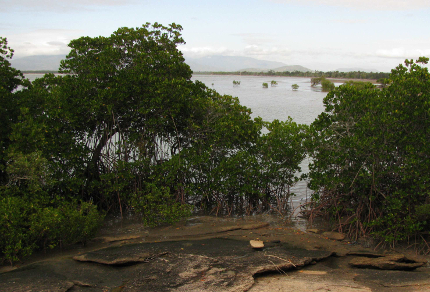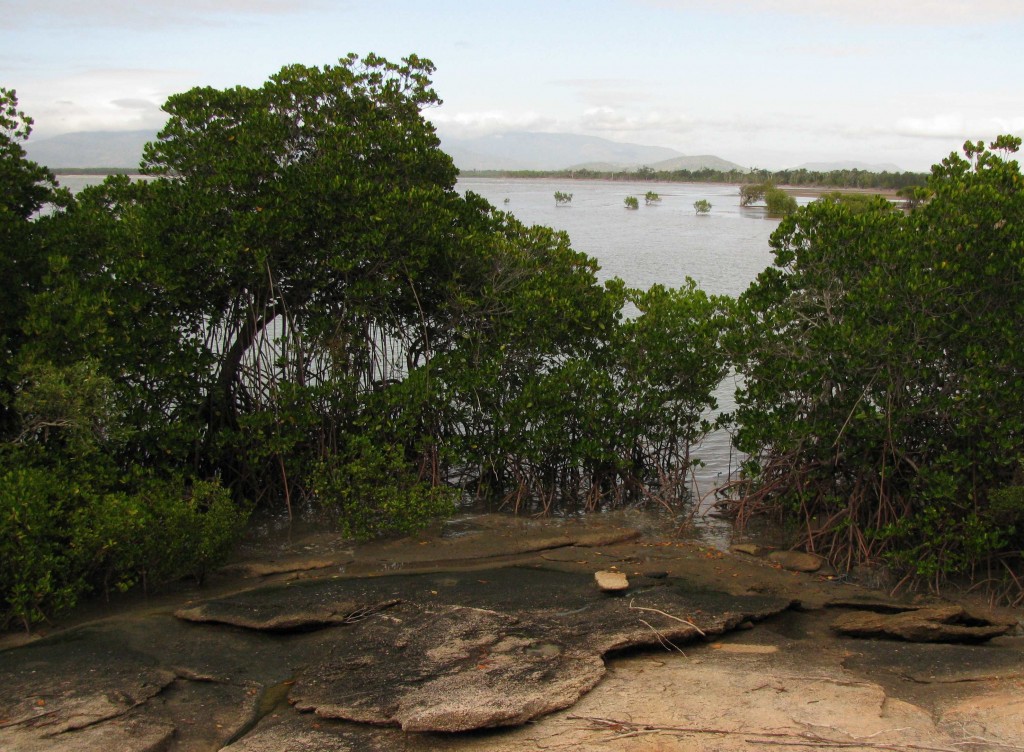
Mangroves Edging Chunda Bay, Bowling Green Bay National Park (© Magi Nams)
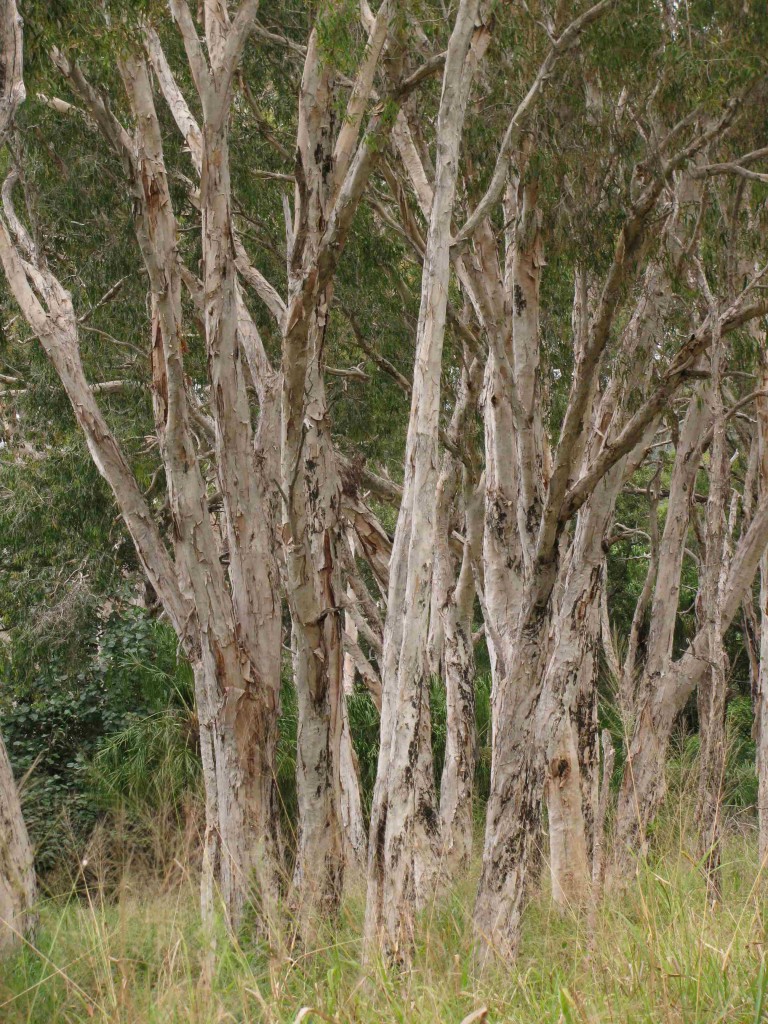
Paperbark Swamp on Chunda Bay Track (© Magi Nams)
Intent on making the most of a moody, cloud-ridden morning, I drove to the Cape Cleveland section of Bowling Green Bay National Park south of Townsville and hiked to Chunda Bay. The unposted track off the access road to the Australian Institute of Marine Science was initially difficult to find, but easy to follow once located. The first section of the 4-kilometre return track led me through upland savannah woodland washed with winter’s warm golds in its understory, after which the trail descended into a swamp of straight, towering paperbarks surrounding what is undoubtedly a creek during the wet, but today was dry. In contrast to the understory of the savannah woodland, the tall grasses and other vegetation within the swamp remained relatively green and lush. Pockets of vine thicket having trees cloaked in trailing vines abutted the swamp and provided habitat for dusky and yellow-spotted honeyeaters.
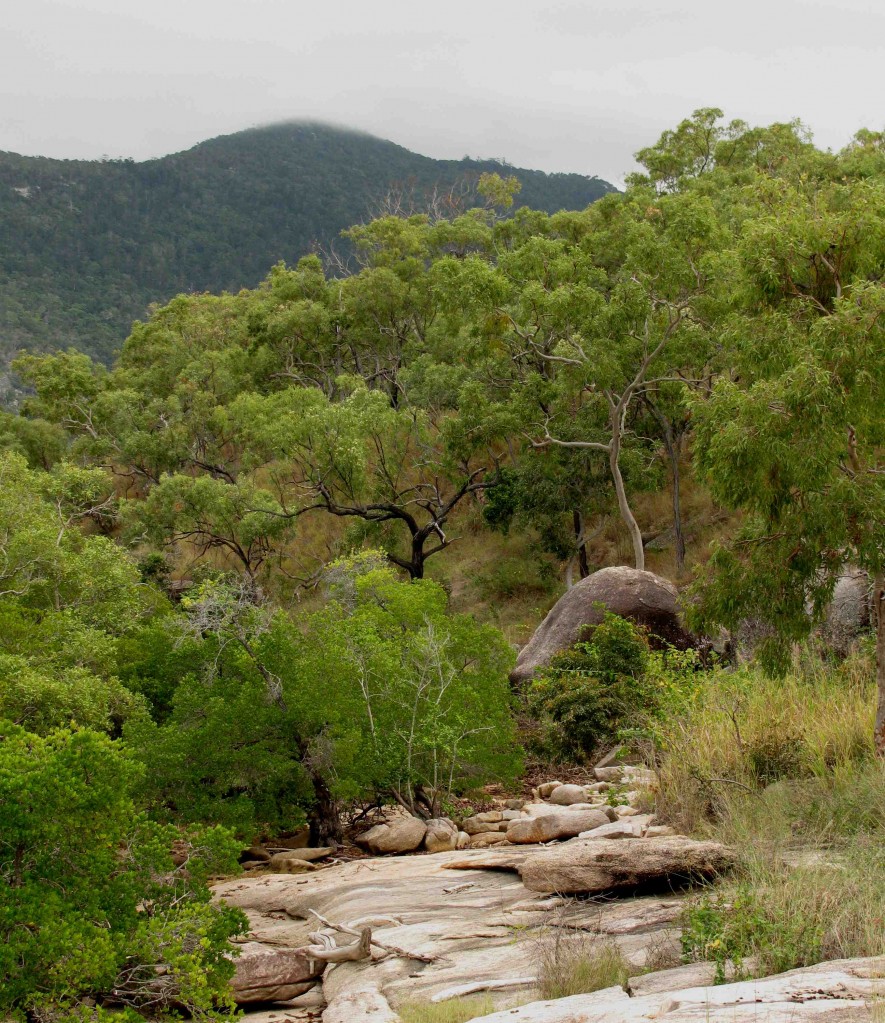
Chunda Bay Track Between Coastal Mangroves and Savannah Woodland (© Magi Nams)
Beyond the paperbarks, the track edged along the base of the southern slope of Cape Ferguson, squeezing between coastal mangroves fringing the bay and the boulder-strewn slope. I followed dingo tracks in wet sand and lost them on slabs of pink granite sloping down to the mangroves. An adult white-bellied sea eagle, elegant in its pale grey and white plumage, flew from the stunted ironbark woods out over the mangroves and ocean, its yellow feet trailing. To the west, rocky, forested peaks brooded beneath low-hanging, grey cloud.
I rock-hopped over granite ledges and boulders, and then, disappointed with the lack of wildlife on that exposed section of track, turned and retraced my steps. On my return to the car, I drove to Alligator Creek campground, located within the Mount Elliot section of Bowling Green Bay National Park, about 15 kilometres northwest of the Chunda Bay track. There, woodland birds abounded, rewarding me with sightings of more than a dozen species of birds, as well as agile wallabies.
Both sections of Bowling Green Bay National Park protect valuable, if distinct, ecosystems. The park encompasses both extensive wetland and coastal ecosystems and rugged uplands including Mount Cleveland and Mount Elliot, the latter home to a number of endemic plant and animal species. As well, the park is one of Australia’s 65 Ramsar Wetlands sites. As such, it protects 35,500 hectares of biologically significant wetland habitat1 that includes marshes, saltpans, and mangrove forests.
Australia was one of the first signatories to the Convention of Wetlands held in Ramsar, Iran in 1971, the purpose of which was to recognize the international value of wetlands and the need for wise use of these wetlands.1 As one of the participating countries, Australia set aside the world’s first Wetland of International Importance in 1974 and has since designated as Ramsar sites other areas possessing rare or unique features or which are significant for conserving biological diversity.1 The majority of the Ramsar sites are located within New South Wales, Victoria, Western Australia, and Tasmania, although Australia has also designated 7 offshore island sites as well as 3 to 5 sites in each of the states/territories of Queensland, South Australia, and the Northern Territory.1
Keen to explore more of the park and its variety of habitats, I decided I would return tomorrow for some early birding at Alligator Creek, after which I would check out the sand dunes and beach at Cungulla. Having identified 211 bird species to date, I’m experiencing the age-old birder’s dilemma of needing to travel farther afield to see new species. I’ll have to be careful – I’m sure it’s an early sign of twitching.
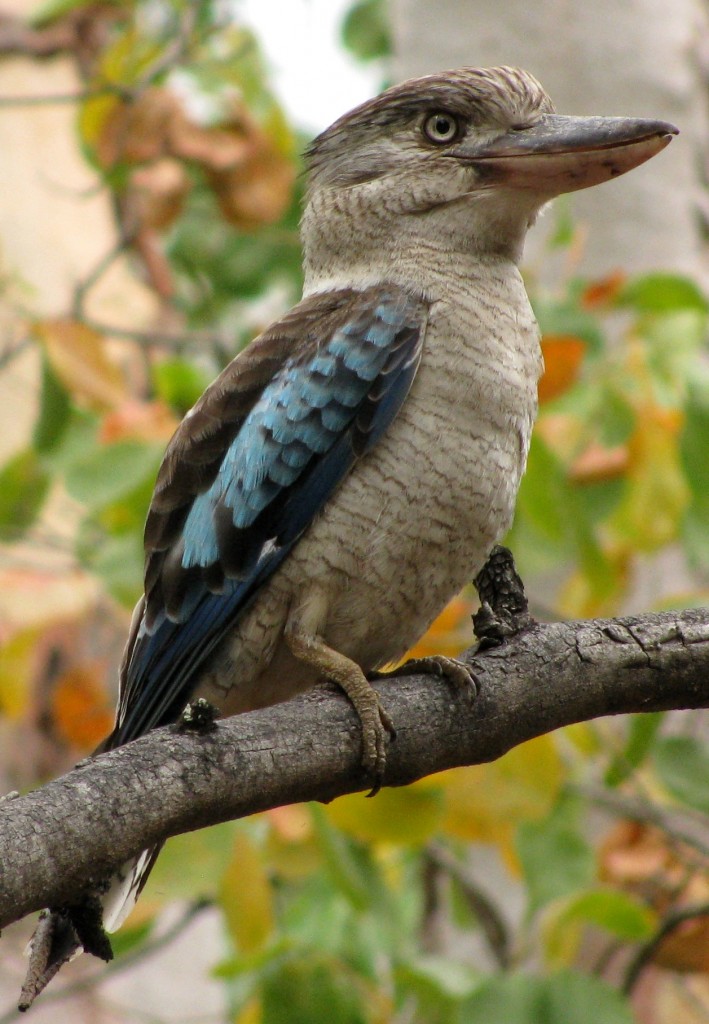
Blue-winged Kookaburra (© Magi Nams)
Today’s fauna: white-faced heron, straw-necked ibises, pheasant coucals, white-bellied cuckoo-shrike, Torresian crow, blue-winged kookaburras, peaceful dove, yellow-bellied sunbird, dusky honeyeaters, white-bellied sea eagle, yellow-spotted honeyeater, bar-shouldered dove, yellow honeyeater, agile wallabies, Australian brush-turkeys, scaly-breasted lorikeets, white-browed robin, rufous whistler, varied trillers, black-chinned honeyeater, grey fantail, little shrike-thrush, brown-backed honeyeater, helmeted friarbird, white-gaped honeyeater, olive-backed oriole.
Reference:
1. Australian Government, Department of Environment, Water, Heritage and the Arts. Australia’s Ramsar Sites. Updated Mar-2008. Accessed 27-Jul-2010. http://www.environment.gov.au/water/wetlands/index.html

